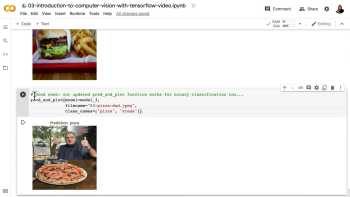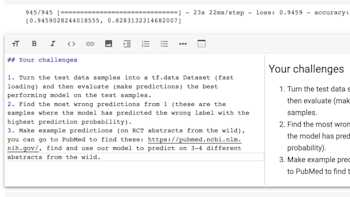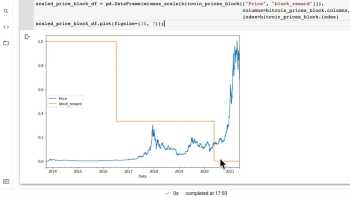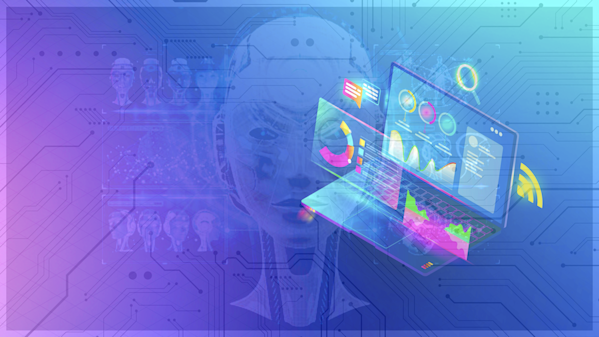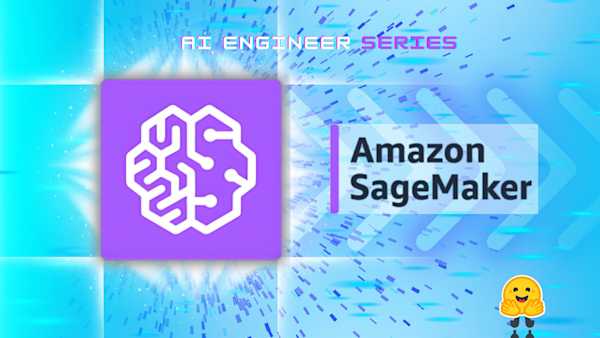What you'll learn
- Understand how to integrate Machine Learning into tools and applications
- Build image recognition, text recognition algorithms with deep neural networks and convolutional neural networks
- Applying Deep Learning for Time Series Forecasting
- Be recognized as a top candidate for recruiters seeking TensorFlow developers
- Build TensorFlow models using Computer Vision, Convolutional Neural Networks, and Natural Language Processing
- Increase your skills in Machine Learning and Deep Learning
- Learn to build all types of Machine Learning Models using the latest TensorFlow 2
- Using real-world images in different shapes and sizes to visualize the journey of an image through convolutions to understand how a computer “sees” information, plot loss and accuracy
- Gain the skills you need to become a TensorFlow Developer
Why should I learn TensorFlow?
Here's the top 3 reasons why we think you should learn TensorFlow:
- Lots of jobs available: Used by major companies like Google, Airbnb, Uber, DeepMind, Intel, IBM, Twitter means there is huge job demand for TensorFlow developers. TensorFlow is outgrowing other popular ML tools like PyTorch in the job market.
- High demand = High salary: TensorFlow developers earn US$148,000 on average with some earning over US$200,000 according to recent statistics from ZipRecruiter.
- Old fashioned FUN: Learning TensorFlow allows you to build deep learning models for a range of tasks such as regression, computer vision (finding patterns in images), natural language processing (finding patterns in text) and time series forecasting (predicting future trends given a range of past events). That's pretty damn awesome!
The goal of this course is to teach you all the skills necessary for you standout as a top candidate for recruiters looking for TensorFlow Developers.
And you'll be learning TensorFlow in good company.
Graduates of Zero To Mastery are now working at Google, Tesla, Amazon, Apple, IBM, Uber, Facebook, Shopify + other top tech companies.
This can be you.
By enrolling today, you’ll also get to join our exclusive live online community classroom to learn alongside thousands of students, alumni, mentors, TAs and Instructors.
Most importantly, you will be learning TensorFlow from an industry expert who has real-world Machine Learning experience.
Here is a full breakdown of everything you will learn in this TensorFlow Course:
This TensorFlow course is very hands-on and project based. You won't just be staring at us teach and code. We'll leave that for other tutorials and courses.
You will actually be running experiments, doing exercises and building real-world machine learning models and projects to mimic real life scenarios.
We will also show you what the TensorFlow exam will look like for you.
By the end of it all, you will develop the skillset needed to develop modern deep learning solutions that big tech companies encounter.
Fair warning, this course is very comprehensive. But don't be intimidated, we will teach you everything from scratch!
0. TensorFlow Fundamentals
- Introduction to tensors (creating tensors)
- Getting information from tensors (tensor attributes)
- Manipulating tensors (tensor operations)
- Tensors and NumPy
- Using @tf.function (a way to speed up your regular Python functions)
- Using GPUs with TensorFlow
1. Neural Network Regression with TensorFlow
- Build TensorFlow sequential models with multiple layers
- Prepare data for use with a machine learning model
- Learn the different components which make up a deep learning model (loss function, architecture, optimization function)
- Learn how to diagnose a regression problem (predicting a number) and build a neural network for it
2. Neural Network Classification with TensorFlow
- Learn how to diagnose a classification problem (predicting whether something is one thing or another)
- Build, compile & train machine learning classification models using TensorFlow
- Build and train models for binary and multi-class classification
- Plot modelling performance metrics against each other
- Match input (training data shape) and output shapes (prediction data target)
3. Computer Vision and Convolutional Neural Networks with TensorFlow
- Build convolutional neural networks with Conv2D and pooling layers
- Learn how to diagnose different kinds of computer vision problems
- Learn to how to build computer vision neural networks
- Learn how to use real-world images with your computer vision models
4. Transfer Learning with TensorFlow Part 1: Feature Extraction
- Learn how to use pre-trained models to extract features from your own data
- Learn how to use TensorFlow Hub for pre-trained models
- Learn how to use TensorBoard to compare the performance of several different models
5. Transfer Learning with TensorFlow Part 2: Fine-tuning
- Learn how to setup and run several machine learning experiments
- Learn how to use data augmentation to increase the diversity of your training data
- Learn how to fine-tune a pre-trained model to your own custom problem
- Learn how to use Callbacks to add functionality to your model during training
6. Transfer Learning with TensorFlow Part 3: Scaling Up (Food Vision mini)
- Learn how to scale up an existing model
- Learn to how evaluate your machine learning models by finding the most wrong predictions
- Beat the original Food101 paper using only 10% of the data
7. Milestone Project 1: Food Vision
- Combine everything you've learned in the previous 6 notebooks to build Food Vision: a computer vision model able to classify 101 different kinds of foods. Our model well and truly beats the original Food101 paper.
8. NLP Fundamentals in TensorFlow
You'll learn to:
- Preprocess natural language text to be used with a neural network
- Create word embeddings (numerical representations of text) with TensorFlow
- Build neural networks capable of binary and multi-class classification using:
- RNNs (recurrent neural networks)
- LSTMs (long short-term memory cells)
- GRUs (gated recurrent units)
- CNNs
- Learn how to evaluate your NLP models
9. Milestone Project 2: SkimLit
- Replicate the model which powers the PubMed 200k paper to classify different sequences in PubMed medical abstracts (which can help researchers read through medical abstracts faster)
10. Time Series fundamentals in TensorFlow
- Learn how to diagnose a time series problem (building a model to make predictions based on data across time, e.g. predicting the stock price of AAPL tomorrow)
- Prepare data for time series neural networks (features and labels)
- Understanding and using different time series evaluation methods
- MAE — mean absolute error
- Build time series forecasting models with TensorFlow
- RNNs (recurrent neural networks)
- CNNs (convolutional neural networks)
11. Milestone Project 3: (Surprise)
- If you've read this far, you are probably interested in the course. This last project will be good... we promise you, so see you inside the course ;)
What's the bottom line?
TensorFlow's growth and adoption is exploding which means more and more job openings are appearing for this specialized knowledge.
Companies like Google, Airbnb, Uber, DeepMind, Intel, IBM, Twitter, and many others are currently powered by TensorFlow. TensorFlow is even outgrowing other popular Machine Learning tools like PyTorch in the job market.
We guarantee you this is the most comprehensive and up-to-date TensorFlow bootcamp course online.
So why wait? Advance your career and earn a higher salary becoming a Deep Learning Engineer and adding TensorFlow to your toolkit 💪.
And you have nothing to lose. Because you can start learning right now and if this course isn't everything you expected, we'll refund you 100% within 30 days. No hassles and no questions asked.
When's the best time to get started? Today!
There's never a bad time to learn in-demand skills. But the sooner, the better. So start learning TensorFlow today by joining the ZTM Academy. You'll have a clear roadmap to developing the skills to build your own projects, get hired, and advance your career.
Join Zero To Mastery Now